Determining Your Ideal Diamond Shape (Part 2)
Posted on Wednesday, February 3rd, 2016
in Diamond, Informational.
Some of the most distinguishable diamond shapes include oval, marquise, pear, heart, and radiant diamonds. These stunning diamonds feature either brilliant or modified brilliant cuts, creating a sparkle comparable to round diamonds. While these diamond shapes can be absolutely stunning, you should always make sure to look out for a black area that resembles the shape of a bow tie. This bow tie effect results from a misalignment of facets, leading to a lack of light being reflected off the facets. Fortunately, this often undesirable effect can usually be avoided through proper cutting techniques.
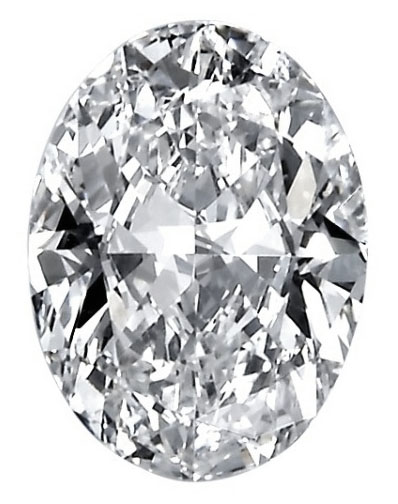 Oval diamond: Created by Lazare Kaplan in the 1960’s, this diamond shape is the ideal choice for someone who likes the look of a round diamond but prefers something a little more unique. Oval diamonds tend to look the best when their length is one and a half times longer than their width. The shape of these diamonds can make one’s finger appear longer and slimmer, a look many people strive for. One thing to keep in mind is that inclusions are typically easier to spot in oval diamonds, so it’s important to choose a diamond with a high clarity and color grade.
Oval diamond: Created by Lazare Kaplan in the 1960’s, this diamond shape is the ideal choice for someone who likes the look of a round diamond but prefers something a little more unique. Oval diamonds tend to look the best when their length is one and a half times longer than their width. The shape of these diamonds can make one’s finger appear longer and slimmer, a look many people strive for. One thing to keep in mind is that inclusions are typically easier to spot in oval diamonds, so it’s important to choose a diamond with a high clarity and color grade.
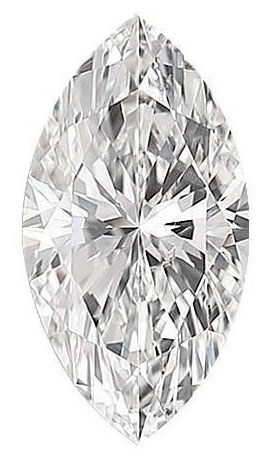 Marquise diamond: Since this elegant type of shape has one of the largest crown surface areas of any other diamond shape, its perceived diamond size is larger than other shapes with a similar weight. Because this diamond shape features two sharp corners, they should always be protected in order to minimize the chance of the diamond chipping. Marquise diamonds tend to look best when their length is twice as long as their width. Anything significantly greater may cause the diamond to lack brilliance. They are commonly set in a vertical fashion to create that longer and slimmer finger look that can be found in oval diamonds. If you’re looking for an even more unique, contemporary look, you may want to consider having the diamond set in a horizontal fashion.
Marquise diamond: Since this elegant type of shape has one of the largest crown surface areas of any other diamond shape, its perceived diamond size is larger than other shapes with a similar weight. Because this diamond shape features two sharp corners, they should always be protected in order to minimize the chance of the diamond chipping. Marquise diamonds tend to look best when their length is twice as long as their width. Anything significantly greater may cause the diamond to lack brilliance. They are commonly set in a vertical fashion to create that longer and slimmer finger look that can be found in oval diamonds. If you’re looking for an even more unique, contemporary look, you may want to consider having the diamond set in a horizontal fashion.
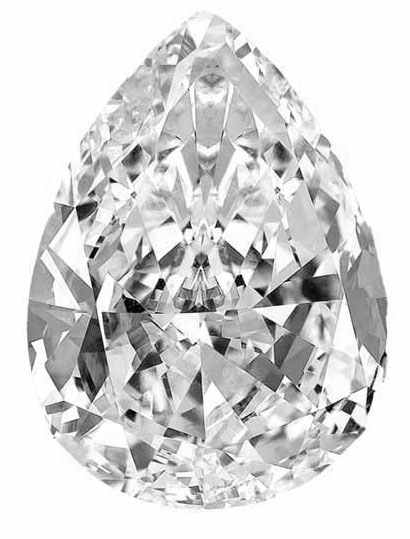 Pear diamond: A combination between a round and a marquise shape, pear diamonds feature a tapered point on one end that usually faces the wearer. While the proportion preference may vary from person to person, the ideal ratio for pear diamonds is 1.60. Having a length 1.60 times longer than its width creates the elegant look many people strive for. Since this type of diamond shape is commonly used in pendants and earrings, pear diamond rings are the ideal matching accessory.
Pear diamond: A combination between a round and a marquise shape, pear diamonds feature a tapered point on one end that usually faces the wearer. While the proportion preference may vary from person to person, the ideal ratio for pear diamonds is 1.60. Having a length 1.60 times longer than its width creates the elegant look many people strive for. Since this type of diamond shape is commonly used in pendants and earrings, pear diamond rings are the ideal matching accessory.
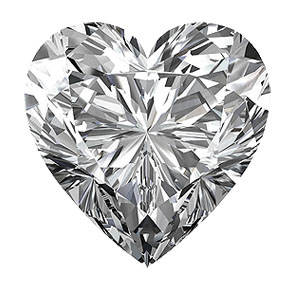 Heart diamond: The perfect shape to express one’s love for another, the heart shaped diamond is becoming increasingly popular, especially among promise rings. Since these diamonds have such a unique shape, we recommend choosing a diamond that weighs over half a carat so that the shape is clearly defined. Make sure the diamond is cut to the correct depth to ensure maximum brilliance and is cut in a symmetrical manner with equal proportions on both sides.
Heart diamond: The perfect shape to express one’s love for another, the heart shaped diamond is becoming increasingly popular, especially among promise rings. Since these diamonds have such a unique shape, we recommend choosing a diamond that weighs over half a carat so that the shape is clearly defined. Make sure the diamond is cut to the correct depth to ensure maximum brilliance and is cut in a symmetrical manner with equal proportions on both sides.
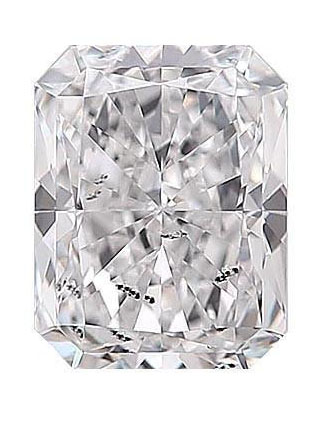 Radiant diamond: Patented by Henry Grossbard in 1977, radiant diamonds are often compared with princess diamonds due to their similar shape and appearance. One of the easiest ways to tell the difference between these two shapes is by looking at their corners. Unlike a princess diamond’s sharp four ends, radiant diamonds feature cropped corners, similar to those on a cushion diamond. Because of this, you don’t have to worry about chipping as much as you would if you were wearing a princess diamond. The one downside to radiant diamonds is that they generally cost more than princess’ since a larger percentage of the rough diamond is lost during the cutting process. Radiant diamonds feature both brilliant and step cuts, creating a unique look that combines the brilliance of round diamonds and the elegance of emerald diamonds.
Radiant diamond: Patented by Henry Grossbard in 1977, radiant diamonds are often compared with princess diamonds due to their similar shape and appearance. One of the easiest ways to tell the difference between these two shapes is by looking at their corners. Unlike a princess diamond’s sharp four ends, radiant diamonds feature cropped corners, similar to those on a cushion diamond. Because of this, you don’t have to worry about chipping as much as you would if you were wearing a princess diamond. The one downside to radiant diamonds is that they generally cost more than princess’ since a larger percentage of the rough diamond is lost during the cutting process. Radiant diamonds feature both brilliant and step cuts, creating a unique look that combines the brilliance of round diamonds and the elegance of emerald diamonds.
Click here to see the differences between round, princess, emerald, Asscher, and cushion diamonds.


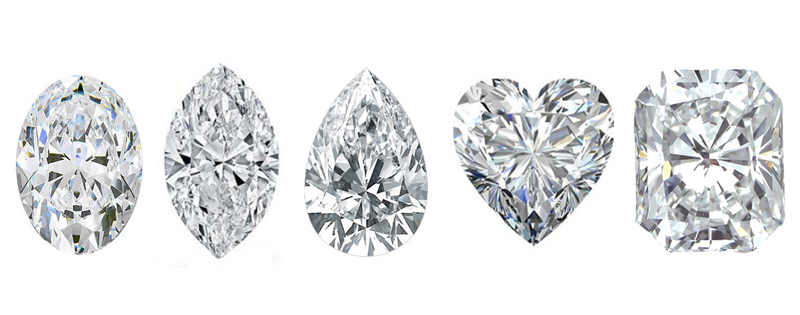
 Oval diamond: Created by Lazare Kaplan in the 1960’s, this diamond shape is the ideal choice for someone who likes the look of a round diamond but prefers something a little more unique. Oval diamonds tend to look the best when their length is one and a half times longer than their width. The shape of these diamonds can make one’s finger appear longer and slimmer, a look many people strive for. One thing to keep in mind is that inclusions are typically easier to spot in oval diamonds, so it’s important to choose a diamond with a high clarity and color grade.
Oval diamond: Created by Lazare Kaplan in the 1960’s, this diamond shape is the ideal choice for someone who likes the look of a round diamond but prefers something a little more unique. Oval diamonds tend to look the best when their length is one and a half times longer than their width. The shape of these diamonds can make one’s finger appear longer and slimmer, a look many people strive for. One thing to keep in mind is that inclusions are typically easier to spot in oval diamonds, so it’s important to choose a diamond with a high clarity and color grade. Marquise diamond: Since this elegant type of shape has one of the largest crown surface areas of any other diamond shape, its perceived diamond size is larger than other shapes with a similar weight. Because this diamond shape features two sharp corners, they should always be protected in order to minimize the chance of the diamond chipping. Marquise diamonds tend to look best when their length is twice as long as their width. Anything significantly greater may cause the diamond to lack brilliance. They are commonly set in a vertical fashion to create that longer and slimmer finger look that can be found in oval diamonds. If you’re looking for an even more unique, contemporary look, you may want to consider having the diamond set in a horizontal fashion.
Marquise diamond: Since this elegant type of shape has one of the largest crown surface areas of any other diamond shape, its perceived diamond size is larger than other shapes with a similar weight. Because this diamond shape features two sharp corners, they should always be protected in order to minimize the chance of the diamond chipping. Marquise diamonds tend to look best when their length is twice as long as their width. Anything significantly greater may cause the diamond to lack brilliance. They are commonly set in a vertical fashion to create that longer and slimmer finger look that can be found in oval diamonds. If you’re looking for an even more unique, contemporary look, you may want to consider having the diamond set in a horizontal fashion. Pear diamond: A combination between a round and a marquise shape, pear diamonds feature a tapered point on one end that usually faces the wearer. While the proportion preference may vary from person to person, the ideal ratio for pear diamonds is 1.60. Having a length 1.60 times longer than its width creates the elegant look many people strive for. Since this type of diamond shape is commonly used in pendants and earrings, pear diamond rings are the ideal matching accessory.
Pear diamond: A combination between a round and a marquise shape, pear diamonds feature a tapered point on one end that usually faces the wearer. While the proportion preference may vary from person to person, the ideal ratio for pear diamonds is 1.60. Having a length 1.60 times longer than its width creates the elegant look many people strive for. Since this type of diamond shape is commonly used in pendants and earrings, pear diamond rings are the ideal matching accessory. Heart diamond: The perfect shape to express one’s love for another, the heart shaped diamond is becoming increasingly popular, especially among promise rings. Since these diamonds have such a unique shape, we recommend choosing a diamond that weighs over half a carat so that the shape is clearly defined. Make sure the diamond is cut to the correct depth to ensure maximum brilliance and is cut in a symmetrical manner with equal proportions on both sides.
Heart diamond: The perfect shape to express one’s love for another, the heart shaped diamond is becoming increasingly popular, especially among promise rings. Since these diamonds have such a unique shape, we recommend choosing a diamond that weighs over half a carat so that the shape is clearly defined. Make sure the diamond is cut to the correct depth to ensure maximum brilliance and is cut in a symmetrical manner with equal proportions on both sides. Radiant diamond: Patented by Henry Grossbard in 1977, radiant diamonds are often compared with princess diamonds due to their similar shape and appearance. One of the easiest ways to tell the difference between these two shapes is by looking at their corners. Unlike a princess diamond’s sharp four ends, radiant diamonds feature cropped corners, similar to those on a cushion diamond. Because of this, you don’t have to worry about chipping as much as you would if you were wearing a princess diamond. The one downside to radiant diamonds is that they generally cost more than princess’ since a larger percentage of the rough diamond is lost during the cutting process. Radiant diamonds feature both brilliant and step cuts, creating a unique look that combines the brilliance of round diamonds and the elegance of emerald diamonds.
Radiant diamond: Patented by Henry Grossbard in 1977, radiant diamonds are often compared with princess diamonds due to their similar shape and appearance. One of the easiest ways to tell the difference between these two shapes is by looking at their corners. Unlike a princess diamond’s sharp four ends, radiant diamonds feature cropped corners, similar to those on a cushion diamond. Because of this, you don’t have to worry about chipping as much as you would if you were wearing a princess diamond. The one downside to radiant diamonds is that they generally cost more than princess’ since a larger percentage of the rough diamond is lost during the cutting process. Radiant diamonds feature both brilliant and step cuts, creating a unique look that combines the brilliance of round diamonds and the elegance of emerald diamonds.